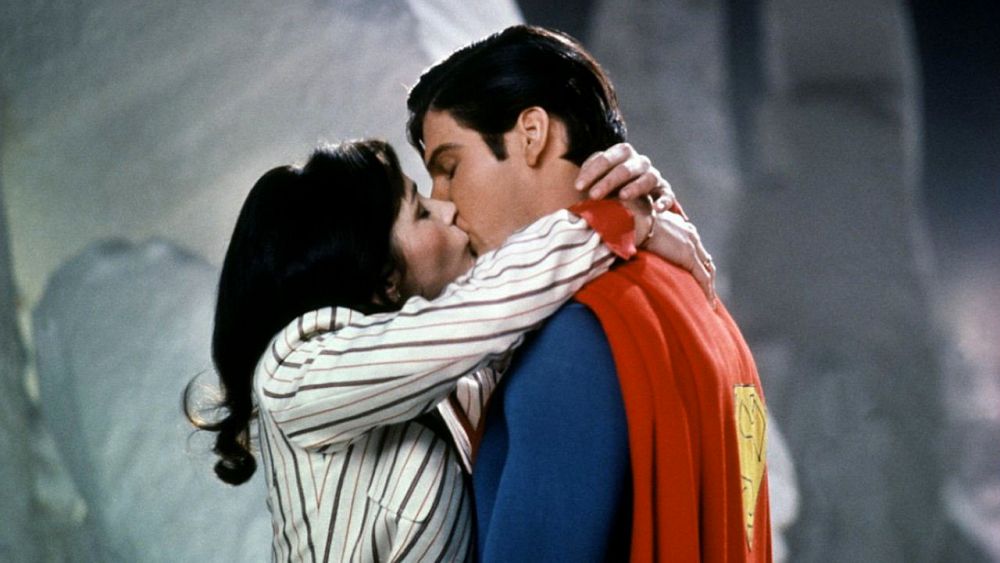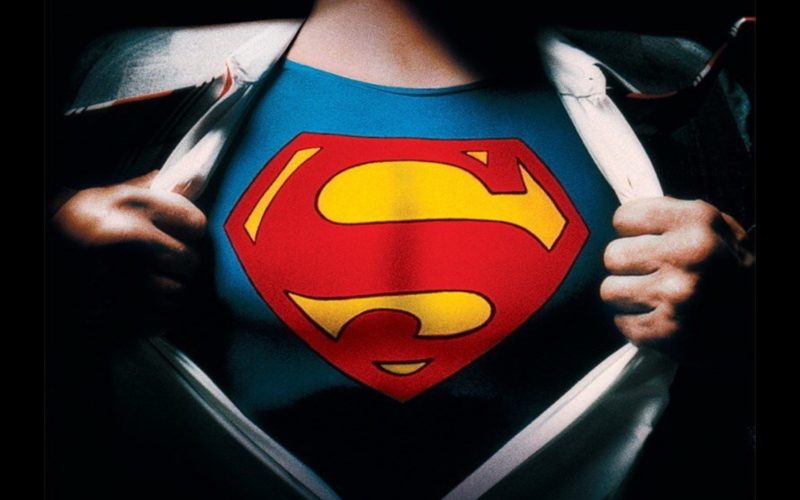Superman II (1980).
A Sequel of Two Halves.
 In December of 1980 (or 1981 depending on where in the world you lived) audiences were given the promised sequel to 1978’s hugely successful Superman. The original plan had been for director Richard Donner to shoot both films simultaneously (not back to back as is often believed) and upon completion of the initial period of principal photography, Donner had filmed almost 75% of the sequel, the aptly titled Superman II. Unfortunately, throughout that initial period and following the release of the first film, Donner had fallen out with the producers, Alexander and Ilya Salkind. When Donner was publicly critical of the Salkinds, their reaction was to fire the director from the sequel and hire Richard Lester in his place.
In December of 1980 (or 1981 depending on where in the world you lived) audiences were given the promised sequel to 1978’s hugely successful Superman. The original plan had been for director Richard Donner to shoot both films simultaneously (not back to back as is often believed) and upon completion of the initial period of principal photography, Donner had filmed almost 75% of the sequel, the aptly titled Superman II. Unfortunately, throughout that initial period and following the release of the first film, Donner had fallen out with the producers, Alexander and Ilya Salkind. When Donner was publicly critical of the Salkinds, their reaction was to fire the director from the sequel and hire Richard Lester in his place.
In order to satisfy the requirements of the Director’s Guild, Lester would have to have shot over 50% of the film. With 75% of the sequel or thereabouts having already been shot by Donner, Lester would have to discard much of that footage and reshoot it himself in order to earn his director’s credit. Gene Hackman did not return for these reshoots and a look-alike double and voice impersonator was used for the additional footage required. The intended use of footage that Donner had filmed of Marlon Brando was also discarded as the Salkinds had been sued by the actor for allegedly not paying him his agreed share of the first film’s profits. In his place Susannah York, who played Kal-El’s mother Lara in the first film, would return as a replacement for Brando’s scenes with Superman in the Fortress of Solitude.
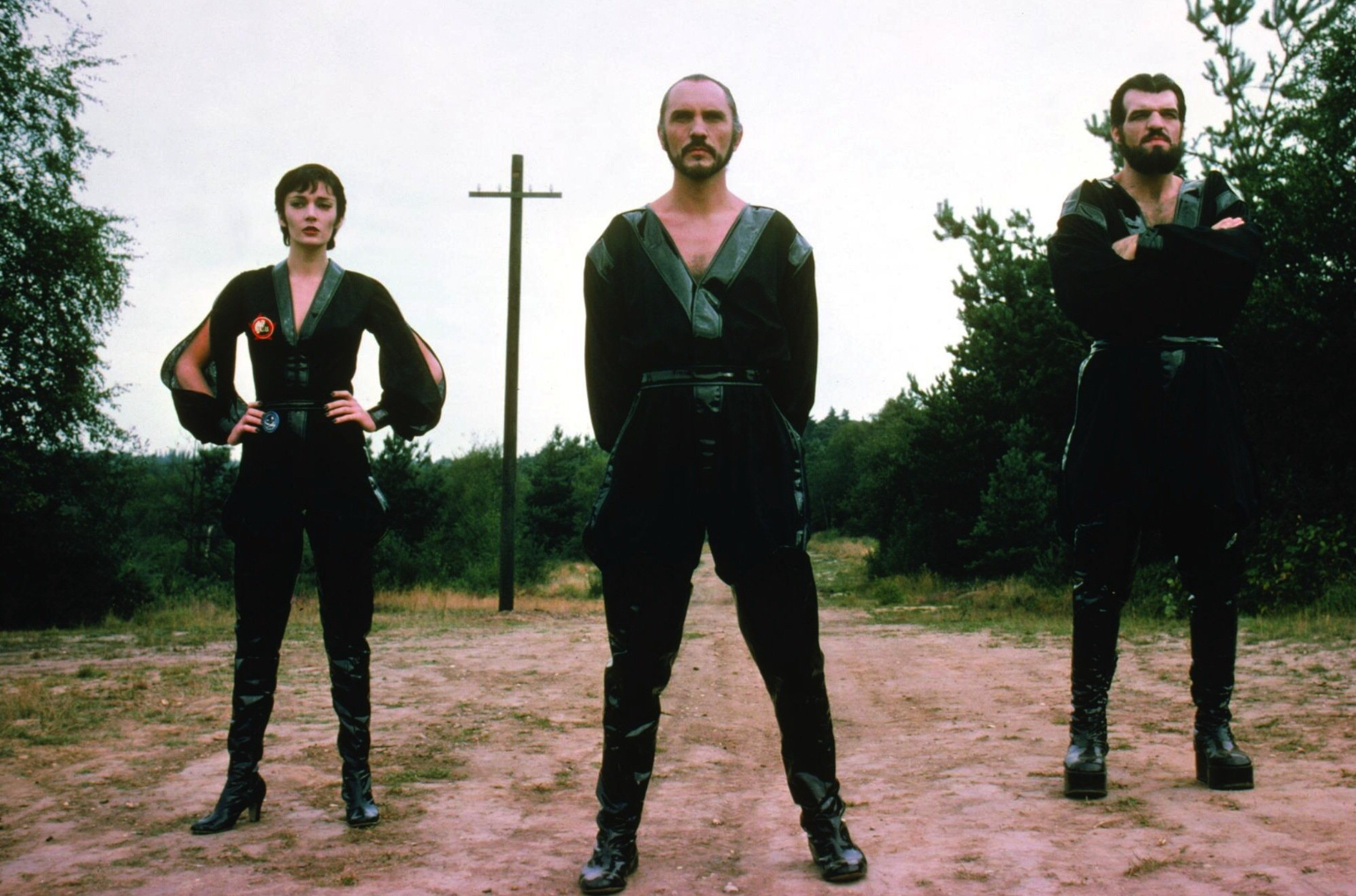
“Think of it, three, count them three super-villains, each one with the same power he has…”
The plot of Superman II had already been established in the first film, whose opening prologue on Krypton showed Jor-El banishing the planet’s three most dangerous arch criminals to the Phantom Zone, a two dimensional prison flying through space. In Lester’s version, which I’ll refer to here on in as the theatrical version, it opens with a flashback of sorts to general Zod’s trial but the voice that heads the trial of the three Kryptonian’s is not Brando’s. His absence from the admittedly great opening recap prologue is quite jarring and is one of several changes from the first film that Lester had to make after he took the reigns of the troubled shoot. Lester has been the subject of some criticism due to the change in tone he brought to much of the film. I myself was once very critical of some of the campy humour he injects into the sequel, and still am to some degree. It must be considered thought that Lester had a very difficult task in taking over a film that had almost been shot to completion. Some of the additional footage he shot is questionable in its rather goofy style but an equal or greater amount of it is perfectly acceptable and in keeping with the tone of Donner’s original.
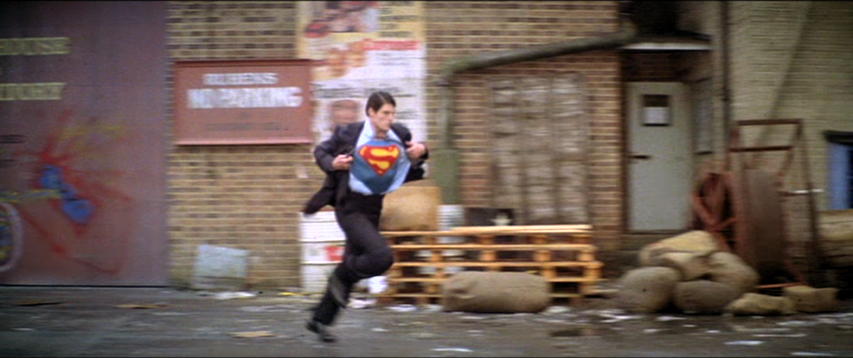
Early on in the film one of the key scenes has a suspicious Lois Lane try and force Clark to come clean and admit his true identity at Niagara Falls. The scene that Lester shot here was one that Donner hadn’t got around to filming and sees a bumbling Clark staying in character to “save” Lois after she tries to call his bluff by throwing herself into the river. Credit to Lester, the scenes he shoots with Clark & Lois all work and showcase the brilliant chemistry the two actors had.
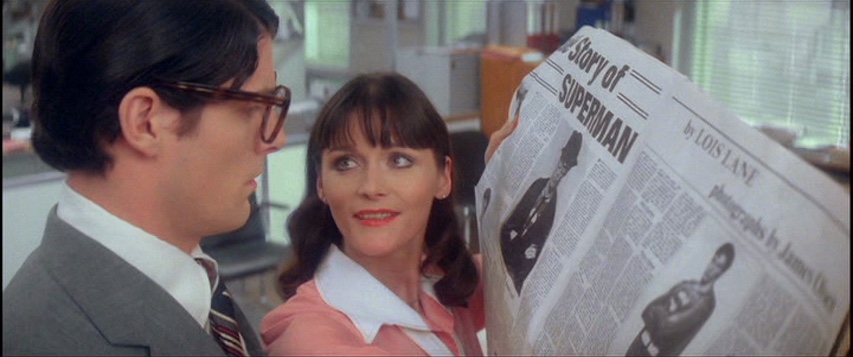
“You ARE Superman!”
Once Superman comes clean it leads to a new take on the character that gives him, albeit briefly, another dimension by answering the question, “What would Superman be like without his powers?” What would cause an otherwise godlike being to want to be mortal? We are given scant time to explore this due to the arrival on Earth of the three Kryptonian criminals but Lester makes good use of that time and shows us that he can’t deny who he is and why he’s here and stripped of his abilities he’s not able to put into use that wholesome morality of his.
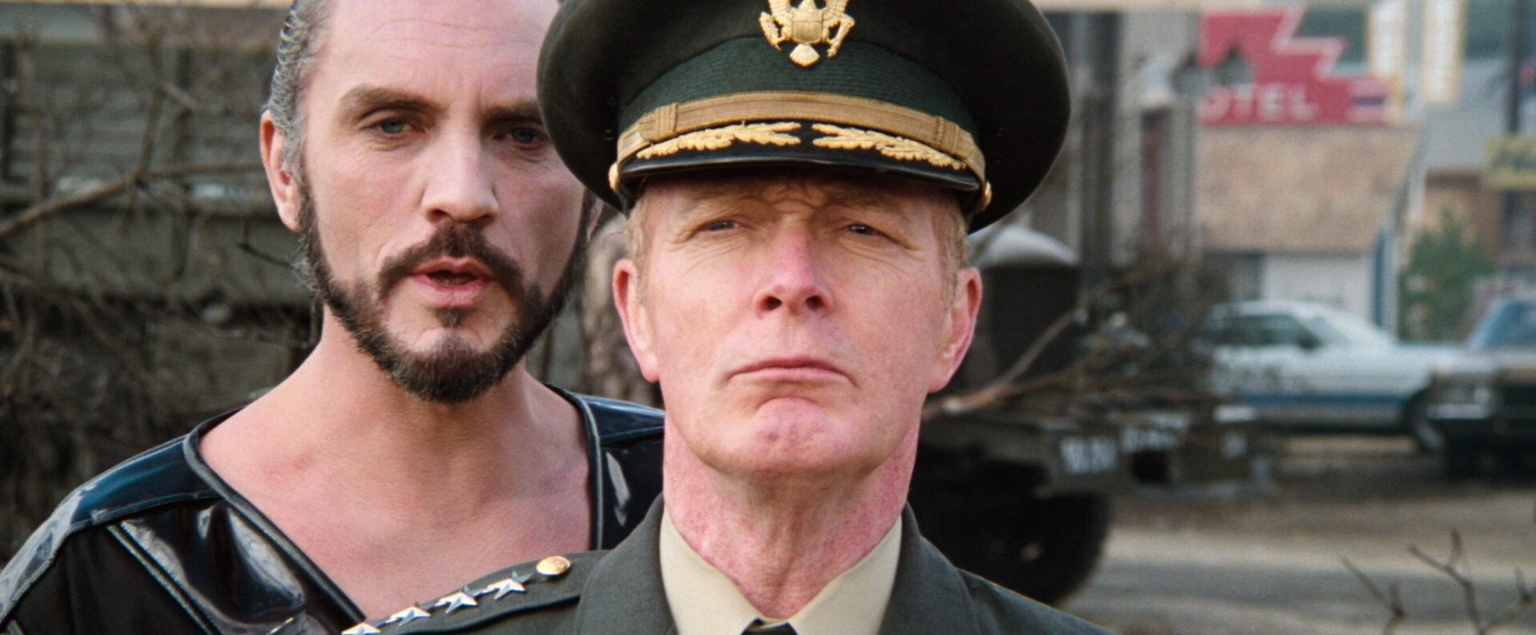
“I win! I always win. Is there no one on this planet to even challenge me?”
The main storyline in Superman II is that of General Zod, Ursa and Non and their attempts to take over and rule our planet. Each one is the moral antitheses of Kal-El but with the same powers. All three put in wholly memorable performances but the true star of the show is Terrence Stamp who relishes every villainous line of dialogue. Whilst it could be argued that these are somewhat one dimensional villains, they more than make up for it with the gleeful carnage they unleash upon a small Midwest American town, followed by The White House and then Metropolis no less.
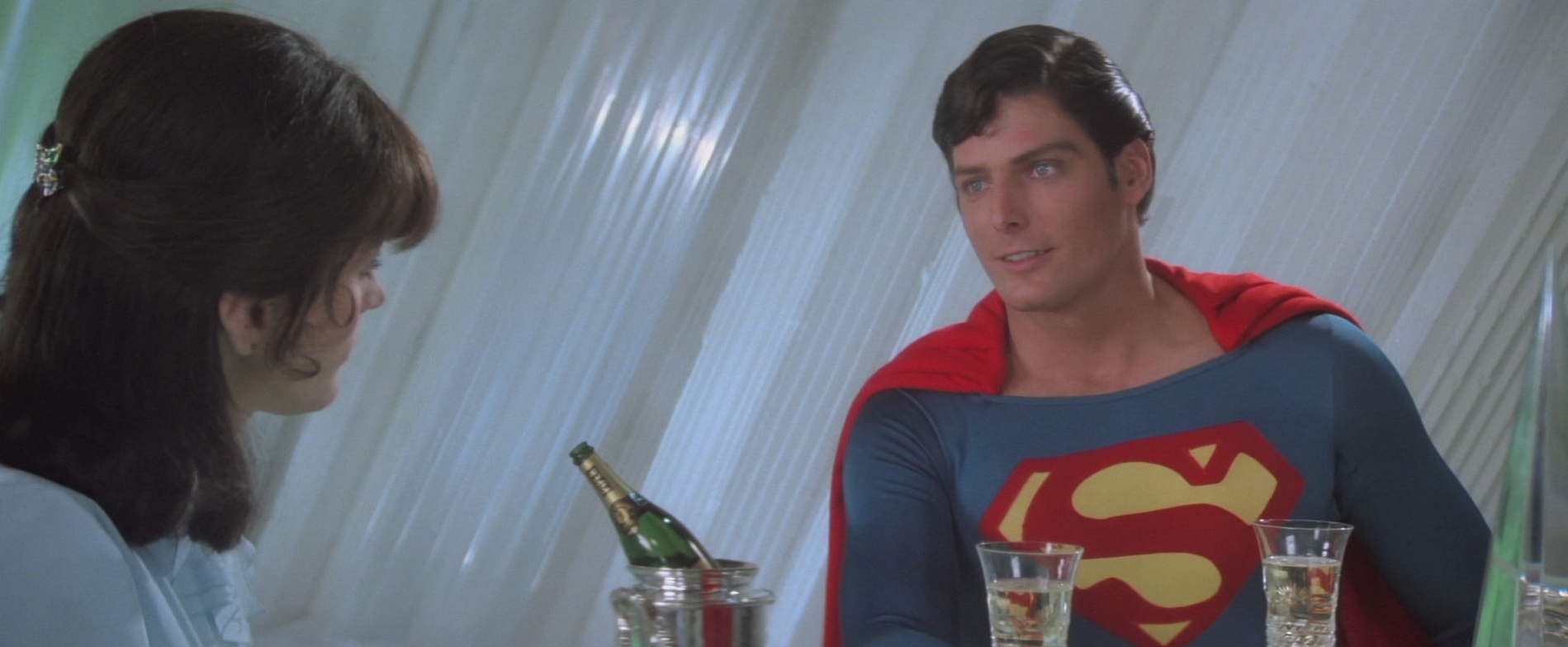 Whilst the three Kryptonians and their ensuing fight with Superman holds a considerable nostalgic value for those who grew up with these films, upon closer scrutiny, and when taken into context of what was established in the first film, Superman II does take some liberties with previously established parameters. By this I mean the introduction of some often ridiculous and previously unseen powers that seem to have been devised purely to add a little variety to the action. New powers such as the heat vision (it didn’t appear in the first film) have become a key ability for the character but others, such as teleportation as seen in the Fortress of Solitude, appear only the once, never to be seen again in the series. And as Family Guy has so rightly pointed out, what’s the deal with Superman’s bizarre polythene ‘S’ logo than he uses to temporarily inconvenience Non? It’s the little contrived inconsistencies such as this that provide some admittedly humorous nit-picking opportunities.
Whilst the three Kryptonians and their ensuing fight with Superman holds a considerable nostalgic value for those who grew up with these films, upon closer scrutiny, and when taken into context of what was established in the first film, Superman II does take some liberties with previously established parameters. By this I mean the introduction of some often ridiculous and previously unseen powers that seem to have been devised purely to add a little variety to the action. New powers such as the heat vision (it didn’t appear in the first film) have become a key ability for the character but others, such as teleportation as seen in the Fortress of Solitude, appear only the once, never to be seen again in the series. And as Family Guy has so rightly pointed out, what’s the deal with Superman’s bizarre polythene ‘S’ logo than he uses to temporarily inconvenience Non? It’s the little contrived inconsistencies such as this that provide some admittedly humorous nit-picking opportunities.
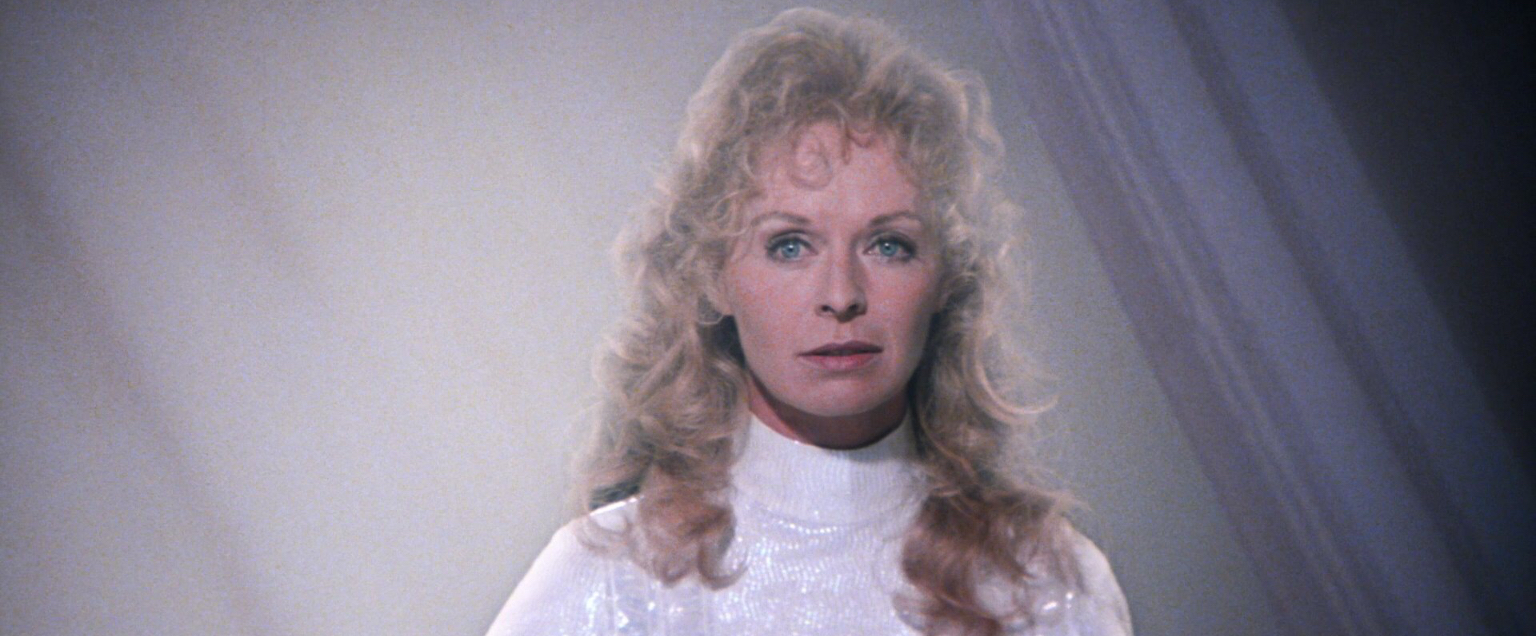
Another (very minor) criticism is that Ken Thorne’s score is not as well orchestrated as John Williams’. Thorne was brought in as composer when Williams passed on the sequel but his mimicry of Williams flawless score from the original does sound slightly rougher around the edges than the master he’s trying to ape. That said this isn’t really something that harms the film, it’s merely something of a purists observation as Thorne’s score remains perfectly serviceable.
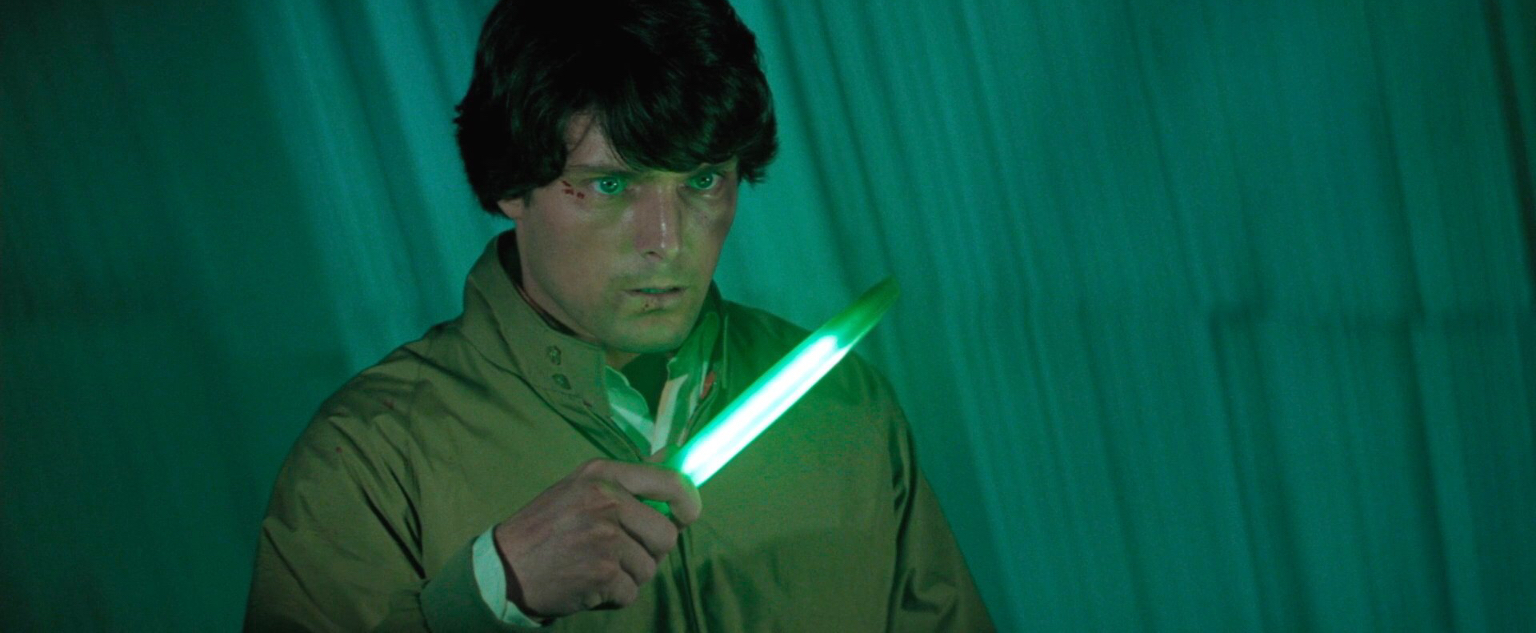
Moving on to the editing of the film leads quite appropriately into the reasoning for the title of this retrospective review, ‘a sequel of two halves’. Superman II is unique in that although many films have seen the director fired having filmed a significant amount of footage, I can’t recall a film where that first director had filmed such a large amount of the film before being fired. Richard Lester’s final assembled theatrical cut certainly has some flaws, due mainly to Lester’s penchant for campy humour, but it is well edited considering that it’s a mishmash of both his and Donner’s footage. For years fans longed to see the rest of Donner’s footage that Lester had discarded and in 2006 their wishes finally came true.
The Richard Donner Cut.
With 2006’s release of Superman II: The Richard Donner Cut on DVD and subsequently Blu-Ray, Warner Bros. did something unprecedented and allowed Donner (who at first needed a bit of persuading by the head of the film’s restoration, Michael Thau) to reconstruct a new edit of the film in line with his original vision. Thau located and restored tons of cans of film of Donner’s discarded footage including the lost Marlon Brando footage. Warner paid the Brando estate a hefty sum which was added to the budget of that year’s Superman Returns which would also use the Brando footage. Previously the stuff of legend, fans now had a version of the sequel they thought they’d never see. The Donner Cut opens with a retread of the trial on Krypton but alternate takes and angles were used to add variety to the new version.
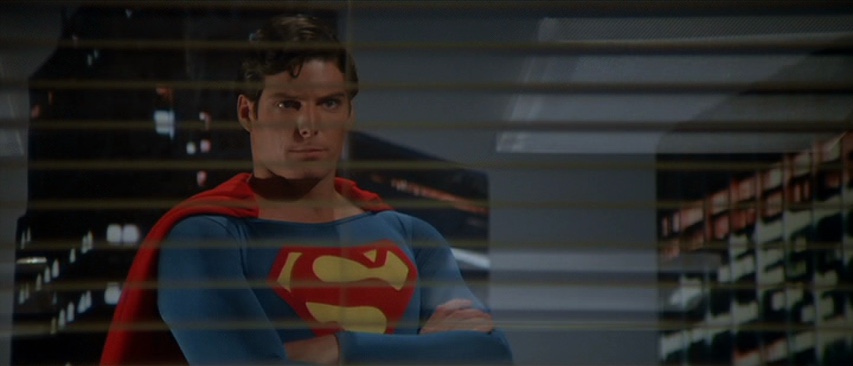
Later on earth we have Donner’s two scenes where Lois puts herself in grave danger to expose Clark’s secret. The first of these scenes in the Daily Planet offices uses new effects, seamlessly blended and works well. The second scene however, in the Niagara Falls hotel room, was never shot and Donner instead used test footage of Reeve and Kidder playing out that scene. Unfortunately some glaring inconsistencies spoil it with Clark’s hair style changing dramatically from shot to shot. It’s a shame as the bluff Lois uses to trick Clark really is quite clever.
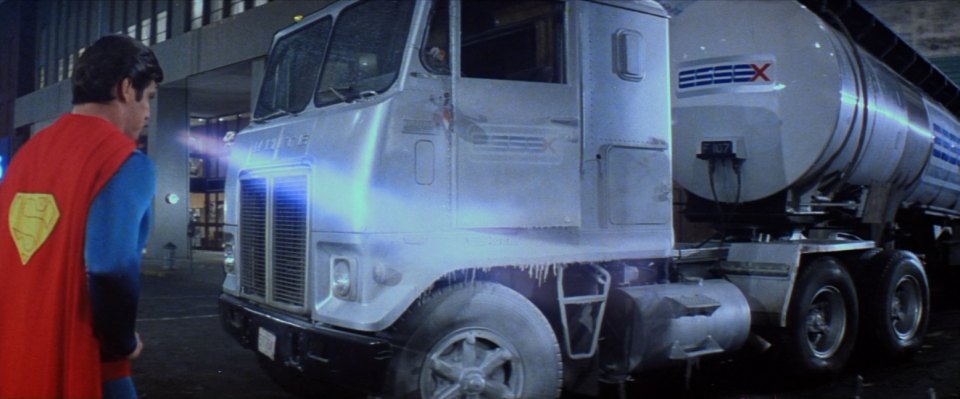
One of the Donner Cut’s best scenes comes after Clark gives up his powers and then returns to the Fortress of Solitude to get them back with the help of his long deceased father Jor-El. This scene with Brando reiterating his “The son becomes the father and the father, the son” speech from the first film is powerful stuff and is a clear analogy of God coming to Earth in the form of his son Jesus Christ, an analogy that has often run like an undercurrent throughout the Superman mythos. We also see Superman destroying the Fortress of Solitude at the end of this scene which helps explain why it doesn’t appear in later films.
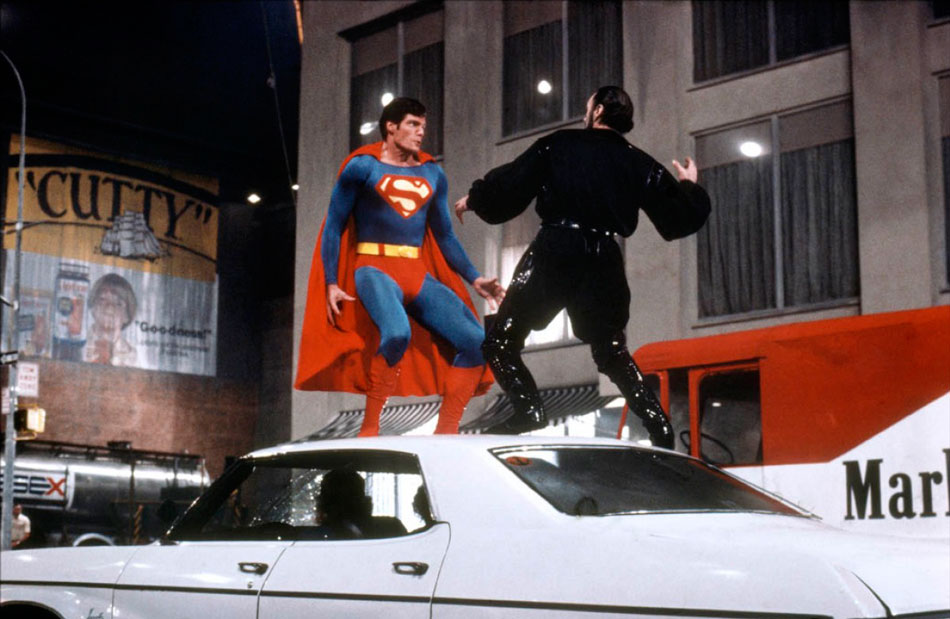
Some of the previously unseen effects shots in the battle in Metropolis, much like in the Lester cut, are certainly rather ropey but we are at least spared the scenes of goofy humour that Lester injected into this great set-piece like the man on roller skates and the one in the phone booth. The tone is certainly improved somewhat by these omissions.
Unfortunately this cut of the film comes unstuck at the end when we’re given the original ending Donner intended before that particular plot device was used to end the first film instead. The whole turning back time ending being used in Superman II makes little sense in the context of what was established in the first film, Superman effectively erasing the events of the film we’ve just watched. This is compounded by the fact that Clark then confronts the diner bully Rocky, who now would never have beaten Clark up as he’s now turned back time!
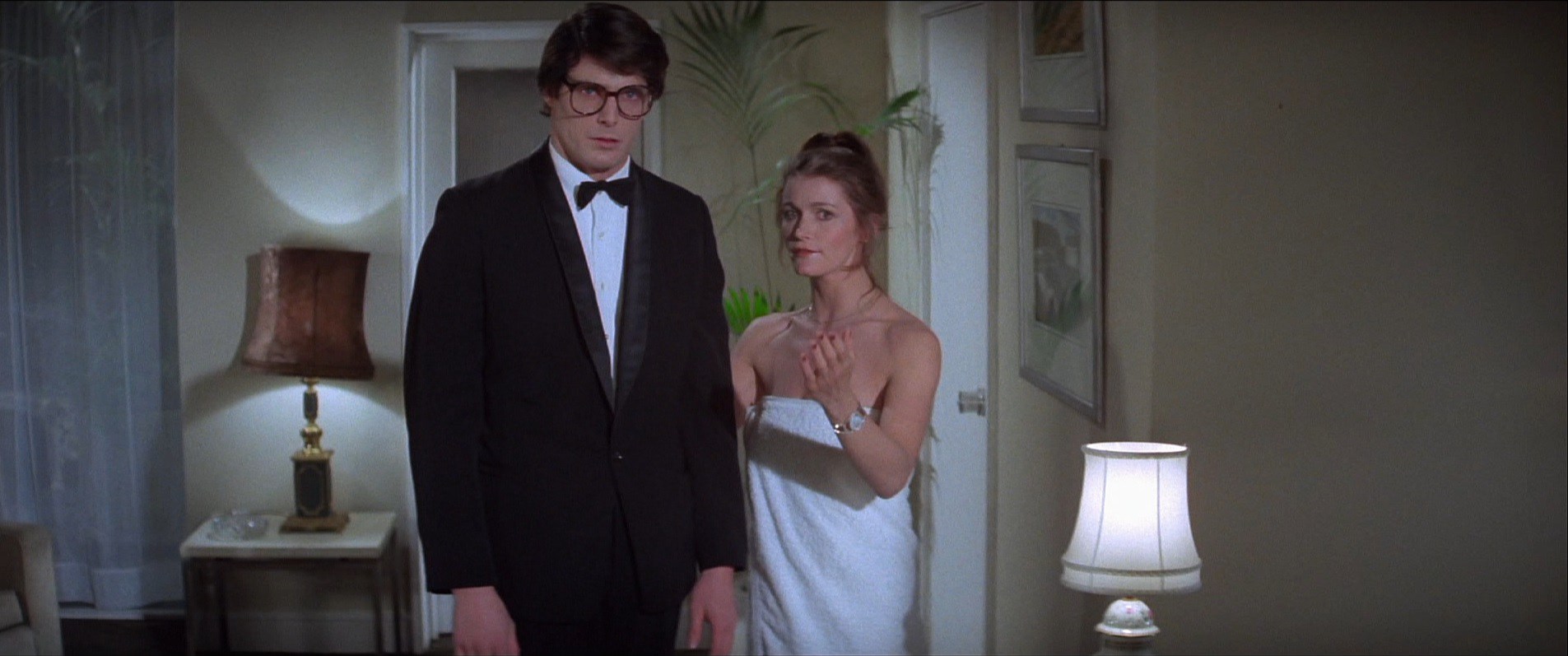
Aside from this it’s also a far less satisfying ending than Lester’s own White House ending. There’s much to be gleaned from the Donner Cut and fans should be grateful it ever saw the light of day. As much as I like that version, editorially speaking it’s an incomplete and inconsistent film, more of a polished work-print than a finished film in places. The Lester Cut is the more complete film in spite of its more overtly campy, humorous moments. Lester also deserves credit for much of the additional character moments he shot such as Lois’ wonderfully played and tearful scene with Clark near the end before the ‘memory kiss’.
What is consistent in both versions are the performances of the principal cast. Kidder and Hackman are back on fine form. Terrence Stamp, Sarah Douglas and Jack O’Halloran play their villainous roles with relish. As before though, the defining performance in Superman II is that of Christopher Reeve who once more proves that he IS both Clark Kent and Superman and defines the character and completely nails the performance in every regard.
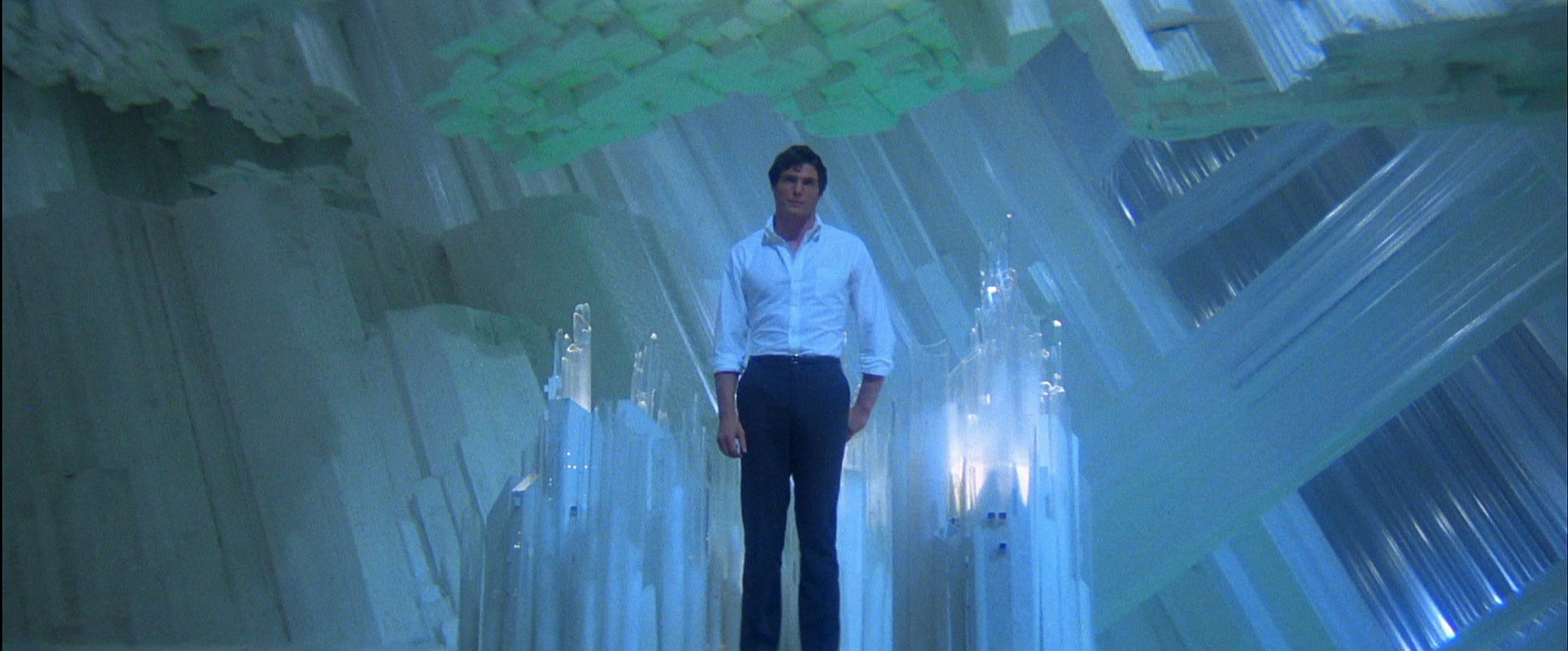
Whilst the theatrical cut is the more consistent film from the point of its editing, it loses points for its goofy humour and the often jarring use of doubles and voiceover acting in respect of Lex Luthor. The Donner Cut has much to offer but doesn’t fit in with the continuity of the first film due to its reuse of the time travel ending which really doesn’t work as well as the Clark/Lois kiss scene that Lester shot. It’s also something of a mishmash of scenes from the two different cuts but ultimately was only ever really released to appease fans who had long requested to see as much of the once lost Donner footage as possible. It’s also great to see the discarded Brando footage.
Both versions have their problems and their merits and whichever version you prefer, Superman II, in spite of its flaws, remains a much cherished and very satisfying sequel. For me the ultimate version would lie somewhere in between the two cuts, the theatrical version minus the campier elements that Lester added would be my preferred version as it avoids the continuity problems that are inherent with the Donner Cut.
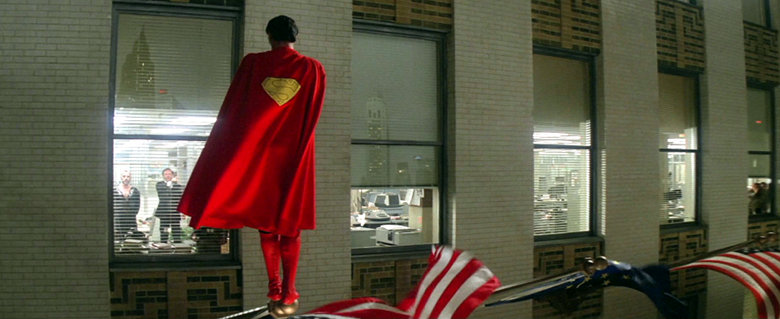
Superman II is a worthy sequel that falls just short of matching its predecessor. That said many fans prefer the sequel, no doubt due to the joy of seeing Superman face off against the three gleefully evil Kryptonians and I’d have little argument against that really as for the longest time it was my favourite of the series. Once again, and in spite of the considerable behind the scenes issues that plagued the sequel, Christopher Reeve and company gave it their all and proved that comic book to film adaptations weren’t just the stuff of B-movies and helped pave the way for the glut of similar films we have today. Whether or not that’s a good thing is a matter for discussion for another time.
Film ‘89 Verdict –
Theatrical Cut – 8/10
Richard Donner Cut – 6/10
